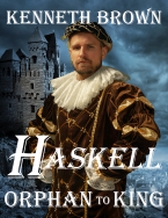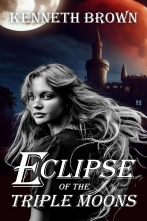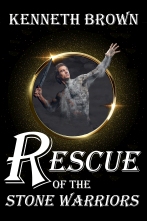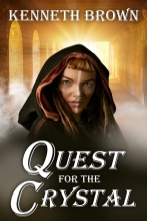Adgitize Press
Scene Promise and Payoffs
By: Ken Brown
Published: 7/6/2019
This is a continuation on a series of writing stronger scenes for a talk I gave at my local library to young adults. In this article I talk about the scene promise, producing the payoff and the resulting impact.
Scene Payoffs
- Promise
- Payoff
- Impact
The Promise - Romance
When writing scenes you are making a promise to the reader. The promise may be action, suspense, theme, an attempt to bring two potential lovers together or a compelling plot point. The promise part of the scene sets a wish fulfillment in the reader’s consciousness.
Will your scene leave the readers feeling breathless with excitement or sad that the adventure failed on some level? Will they see two people in a romance novel move closer to the moment when they find true love? Will your scene leave the reader satisfied with the initial promise?
The promise has only one function, to tease the reader into being compelled to see how the scene turns out. The best way to increase the promise value is to up the stakes. You increase stakes through character and plot. Increase either character or plot and the stakes and the promise is enhanced.
Sally felt exhausted after a day of helping the teenagers wash cars to earn money for their upcoming senior day trip to the beach. She wanted to fall into bed and sleep for two days. Muscles ached that she hadn’t used in years. But tonight she couldn’t rest. Bill, her loving husband of twenty five years planned an anniversary dinner with their close friends.
She received a jar of makeup from a friend at the laboratory, Dr. Murphy, makeup guaranteed to remove wrinkles and dark spots under the eyes. Dr. Murphy said it was still experimental, but showed promise in earlier experiments. Should she use it tonight? A look in the mirror told her the answer.
Sally opened the jar and smelled a sweet lemon fragrance. She smeared a finger in the jar and rubbed it between her finger and thumb.
“Here goes,” she shut one eye to apply the makeup.
We like Sally, she’s a good person celebrating her 25th wedding anniversary. We don’t want anything bad to happen to her. The stakes about what might happen with the experimental face cream have gone up because of potential danger to someone we like. We don't know where the story is heading at this point. Is it about the face cream or is it about the relationship between Suzy and her husband?
The Promise - Suspense or Thriller
Another way is to cast doubts on Dr. Murphy’s character and change the plot texture.
Sally felt exhausted after a long day on her feet at the laboratory. Dr. Murphy made them work long hours in the lab, but today might be her last day. Dr. Murphy wanted her to do human testing on herself with the new drug he created. The doctor had killed two test animals with the substance but said he had changed the formula and it was now safe. The lab wouldn’t let the doctor use animals anymore. Their disfigured remains were too horrible to look at. If the drugs weren’t safe for animals why should Sally use it?
Dr. Murphy said if Sally was afraid of the face cream then she shouldn’t come back into the lab tomorrow. She needed this job, her daughter was entering college next year. But if the cream killed animals, what might it do to her?
She unscrewed the lid and a horrendous smell made her turn her head. She put the lid back on. No way. How difficult would it be to find a new job, she thought? She looked in the mirror at the black circles around her eyes. She unscrewed the lid and rubbed the cream between her fingers. She shut one eye to apply the makeup.
The goal here was to make Dr. Murphy appear sinister and mean and to enhance a possible plot point. Animals have died from the formula and the doctor wants Sally to use it on her face. The stakes are higher, job, death and maybe disfigurement. It would be hard to start the scene like this and then transition to a love story.
The Payoff
Making a promise is easy, but keeping the promise is difficult. The payoff is the part of the scene where writers can fail. The payoff will concentrate on plot or character. Plot payoffs will force a shift in the plot. The characters will have something happen to them or their external circumstances will change. Character payoffs will find a shift in the character, an internal change will occur to them based on what has happened.
Don’t give the reader what you “think” she wants. The hero does not have to succeed in each action scene; the lovers don’t have to embrace in each scene. Predictable scenes disappoint. Don’t make it easy for your romantic characters to get together. Show us their personalities as one tries to hook up with the other. Is he clumsy, a bully, clever or a total nerd? Throw roadblocks in their way to make the scene more compelling. No happy people in happy land.
Here's a terrific quote from Raymond Obtsfeld.
Write yourself into a corner to the point you don’t know how to get your characters out of the situation. Why? When you don’t know how to solve the character’s dilemma then you will be forced to think more deeply about the situation. This makes the story more interesting. It doesn’t always have to be a “this character is going to die situation.”
You can also make it into a moral dilemma where you are forced to accept one of two outcomes, both of which is unacceptable to the character.
The reader needs to know the characters better, their feelings, their struggles, similar experiences that didn’t work.
The Impact
Tying this together with the scenes from last week, we find our character reflecting on what just happened. How did she feel? What dilemmas have arisen because of what just happened? Will Sally become disfigured or will she quit her job? Will her husband walk in on her applying the makeup and she has become an animal or will she be young again as when they first met or her IQ has gone up fifty points? The sequel scene will show the impact on the characters. Enhance the impact on the characters to satisfy the reader and make them go to the next scene.
Show Don’t Tell
In the craft of writing, there is a saying, show don’t tell. What does that mean? It means instead of telling us Bill is distraught and afraid, you show us how his body is reacting. He feels the blood racing through his body. His hands shake as they hold his head.
Recently, a member of our writer's group read a story that was all telling and no showing. We heard the member recite the character's life story from singing as a child, to singing at a local bar, to singing in local competitions to becoming a great and wonderful singer. But there was no conflict, no dialogue and no suspense. That's what happens when you tell a story instead of showing the story.
Instead of telling us about Sally’s experience at the party, you show us the party.
Tell
Sally became furious when she saw Suzanne talking to Sally’s boyfriend. She was going to stop this nonsense. She placed her drink on the counter and walked over to them.
Show
Sally watched her arch enemy, Suzanne, press close to Sally’s boyfriend, Bill. Bill has that stupid grin on his face that he gets when Suzanne talks to him. She has that perfect smile that her parents spent thousands of dollars to change the bucktooth grade school girl into a model. Suzanne placed her hand on Bill’s arm and moved even closer. Sally’s face felt hot and she felt sweat drip down her forehead. She didn’t want to make a scene, but she was tired of that gold digger going after her boyfriend. This had to stop. Now. With hands shaking she placed her drink on the counter and stomped toward Suzanne.
In the second version of the story we see how she feels. You know she’s furious not because the author told you, but because you’ve felt that way before and you feel the same emotions she’s feeling. Suzanne isn’t just talking to Bill, she’s pressing close and smiling. She’s touching his arm. Sally didn’t walk over to them, she stomped.
What’s the difference between Showing and Telling? I always think of it as you telling a friend about a TV show you saw last night. Yeah, you tell the plot points and maybe a reaction or two. But the friend doesn’t feel any emotion about the show. Not the same way because you experienced the event emotionally and your friend received highlights of the show. Showing allows the reader to experience the event the same way the character is experiencing the event. We want the reader to feel the story emotionally.
This is the end of the talk I gave to the teens. If you work on some of these concepts with your own writing, you will find readers enjoying your writing and wanting to read all the stories you write.
Recent Blog Articles
Full Moon Snow Covered Backyard
My Current Projects October 2020
Make Your Settings Do Double Duty
Understanding the Scene Process
What is a Scene Purpose or Focus
The Reaction Scene or Sequel Scene
What are the Building Blocks of a Novel
Your Writing Effort is Front Loaded
What I Learned from Reading Lee Child Books
Six Reasons to Describe Your Characters




